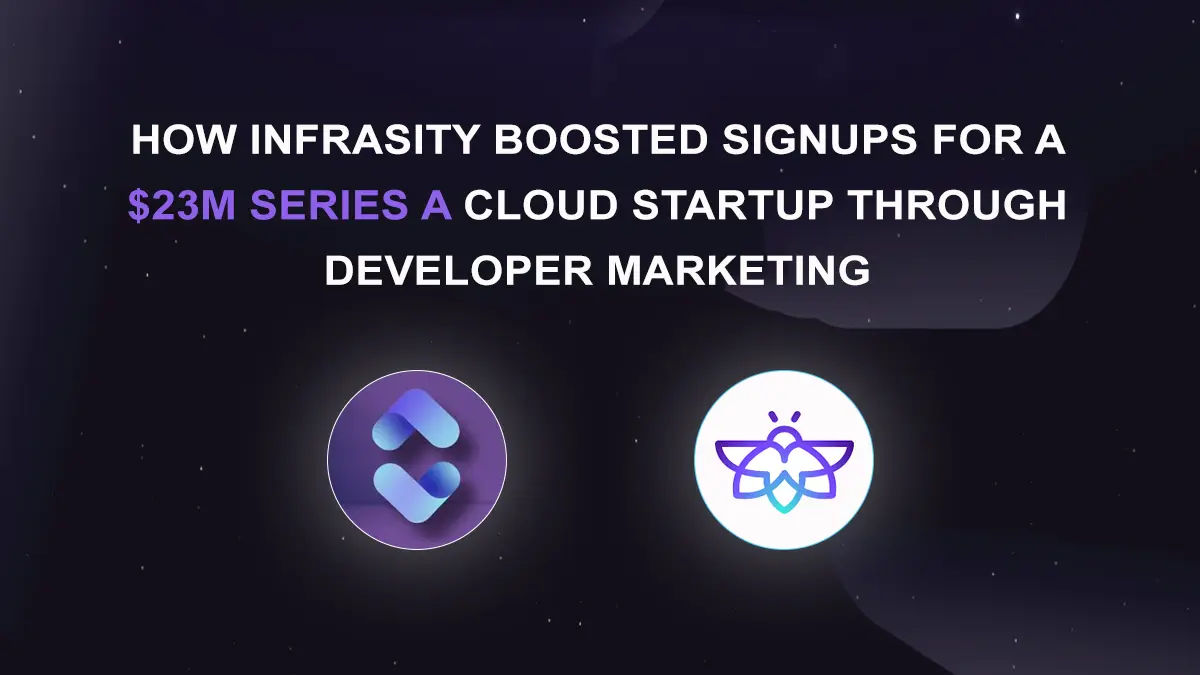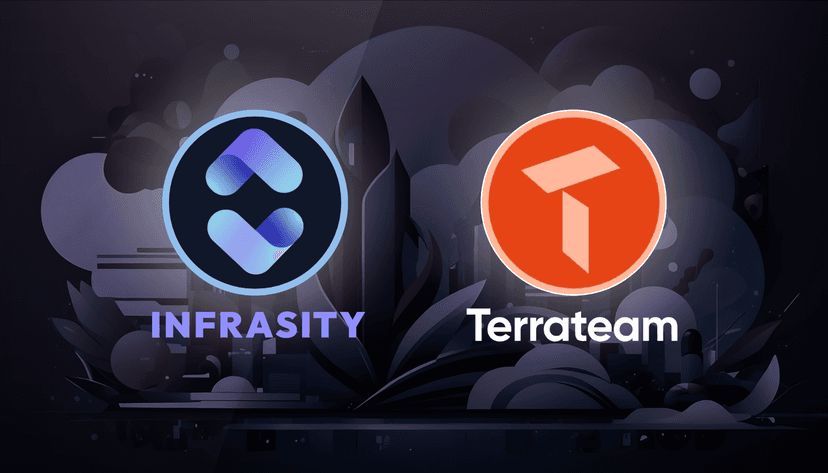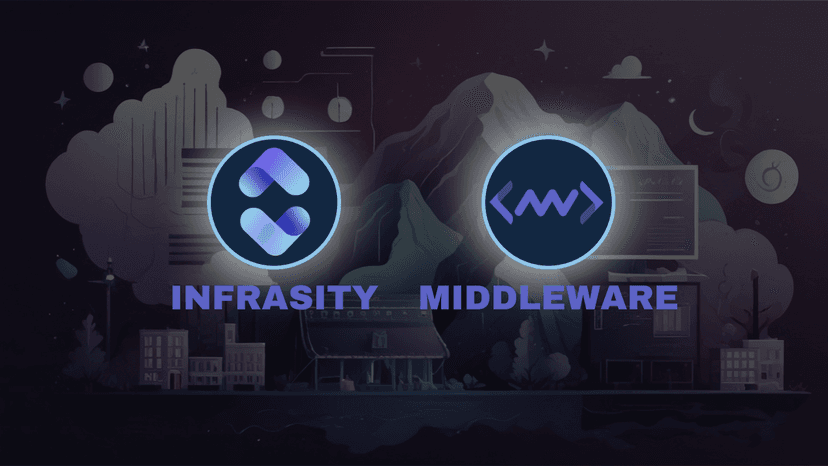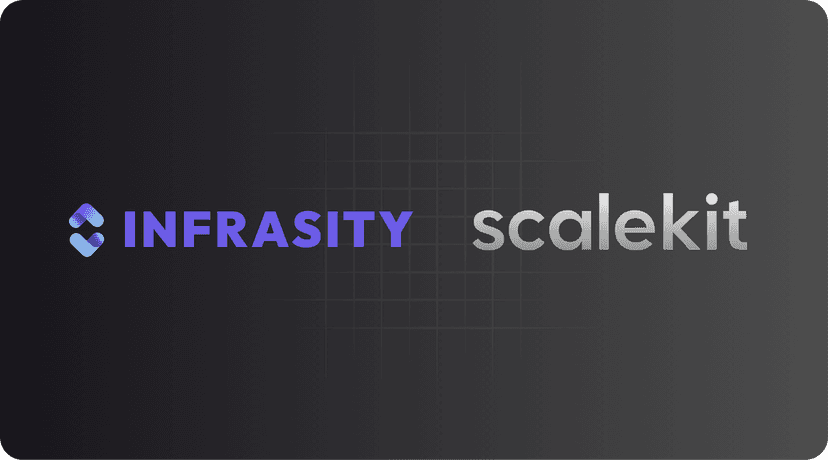Overview
Firefly.ai is a platform that positions itself as a trusted partner for DevOps and Platform teams struggling with the growing complexity of multi-cloud environments. Its value lies in enabling developers to gain visibility, detect drift, and manage cloud infrastructure seamlessly through Infrastructure-as-Code workflows. Announcing Firefly's $23 million Series A funding, our journey with Firefly.ai surrounds tackling cloud complexities and redefining cloud management, driven by a passionate team and innovations that promise a transformative future.
Developer-first products succeed only when they win the trust of engineers, a group famously resistant to traditional marketing. Studies show that 78% of developers rely on peer-created content, documentation, and community discussions before adopting a new tool.
Firefly’s cloud infrastructure automation platform gives teams of DevOps unified, code-to-cloud visibility and control. It scans IaC and runtime assets across multi-cloud, Kubernetes, and SaaS environments, detects drift and unmanaged resources, enforces policy-as-code (600+ rules), and delivers AI-powered remediation that can auto-generate IaC fixes or submit PRs.
Because Firefly’s value is deeply technical, it requires provisioning automation, policy enforcement, cost checks, and the rapid codification of existing infrastructure. At the same time, it needs developer-first storytelling and runnable artifacts to drive adoption, including clear IaC workflows, starter templates, quickstarts, and problem-focused examples that demonstrate how Firefly solves real infrastructure pain points.
This case study examines how Firefly, partnered with Infrasity, developed and implemented a scalable developer marketing strategy that leverages deep engineering content and Reddit marketing services. From researching the competition to targeting the best threads around drift detection, IAC, Cloud governance, Infrasity identified and planned a customized strategy for the best growth results as part of their dev marketing services.
Initial Challenges Firefly Faced
Firefly.ai operates in a crowded space, with multi-cloud governance, cost visibility, and compliance tooling. While its feature, such as drift detection, IaC generation, guardrails, cost policies, and orchestration via Terraform, OpenTofu, and Terragrunt, differentiates it, the developer adoption curve was the bigger challenge.
Adding to this complexity, Firefly was competing with well-funded players such as Spacelift, which raised $51 million in its Series C funding round, and env0, both of which had already established strong visibility in the Infrastructure-as-Code and platform engineering ecosystems.
Developers are often skeptical of marketing messages, especially when they come from vendors. They seek authenticity, technical depth, and practical solutions. To resonate with this audience, Firefly needed to:
- Provide solution-driven content addressing real-world problems: Developers do not want high-level marketing claims, but rather want answers to challenges they face regularly. Challenges like drift detection or misconfiguration, and Firefly mirrors these pain points, providing hands-on solutions.
- Translate complex governance concepts into developer-consumable formats: Formats such as IaC, drift detection, and compliance frameworks. To gain traction, these concepts needed to be explained with clarity, using examples, workflows, and tutorials.
- Compete for visibility: Against large incumbents and open-source tools already embedded in workflows. Established vendors and widely adopted open-source solutions already dominate the conversation. Firefly carved out its space through a thorough developer marketing strategy, ensuring that developers discovered its unique value.
- Build community credibility: Developers actually discuss their problems at community platforms like Reddit, GitHub, Discord, etc. Instead of relying on paid campaigns, Firefly needed to meet engineers where they already were and build trust in these spaces, which meant showing up consistently with problem-first insights, not sales pitches.
Infrasity’s Approach to Firefly’s Challenges

Infrasity approached Firefly’s challenges with a developer marketing strategy rooted in 3 pillars: technical content, problem-solution storytelling, and community-driven developer marketing.
The result was a strategy that educated, engaged, and converted meeting developers where they are, while proving Firefly’s value with clarity and credibility.
- Technical Content
Infrasity developed a strategy to face this challenge and developed content exclusively for developers.
- Blogs: Covered well-researched and trendy topics like drift detection, cloud auditing, IaC best practices, and compliance frameworks. These were written to provide value and deep insights, rather than promotional messages.
- Whitepaper & Updating Content: Created in-depth whitepapers to guide developers through Firefly’s use cases, and updated outdated content to perform better on SERP.
- Ebook: Created in-depth ebooks to guide developers through Firefly’s use cases and find solutions to their pain points.
- Problem Solving Storytelling: Infrasity incorporated diagrams, screenshots, and code snippets to illustrate concepts and workflows, making complex topics more accessible.
- Community Engagement
Infrasity recognises the growth of community platforms over the years and their potential as a marketing platform. Developers trust peers more than polished ads. Recognizing this, Infrasity placed Firefly in community conversations, joining community discussions and indirectly promoting Firefly in the community. We took action in:
- Community Discussions: Identified threads on r/devops, r/kubernetes, and r/aws where engineers discussed challenges like cost overruns, ClickOps drift, and compliance audits. Instead of self-promotion, Infrasity contributed genuine and value-driven answers to pain points faced by Developers.
- Problem-first Approach: Developers in these communities value practical insights over sales pitches. Infrasity’s team of experienced developers focused on exploring common challenges, such as “Why drift detection is a silent SRE killer,” providing actionable guidance and starting thoughtful discussions.
Infrasity’s Action Plan for Firefly.ai
Infrasity’s execution plan had 3 distinct phases:
- Phase 1: Research & Hands-on Experiences
We began the engagement with Firefly by conducting in-depth market and trend research, complemented by practical, hands-on experiments. Rather than relying on surface-level reports, our team analyzed real conversations in developer communities, engineering forums, and technical discussions. The team mapped Firefly’s multi-cloud governance features directly against developer pain points while also benchmarking the positioning of competitors like Spacelift and env0. Instead of relying solely on reports or second-hand insights, our team first approached problems manually, solving them step by step. Once the manual process was clear, we reproduced the same scenarios using Firefly, allowing the team to directly observe differences in efficiency, automation, and results.
For instance, infrastructure drift detection wasn’t positioned as just a feature; it was aligned with compliance audits that engineers actively discuss and troubleshoot in Reddit communities. By analyzing high-value subreddits, ongoing threads, and developer conversations, we identified where these challenges naturally surfaced and ensured that the blog posts or community replies were grounded in the real language, struggles, and scenarios developers face daily.
- Phase 2: Content Development
A strong dev marketing program cannot exist without a clear, disciplined content strategy. For Firefly, Infrasity designed a content calendar that worked like a sprint board, which aligned with Firefly’s broader business goals and developer community needs.
Instead of creating blogs in isolation, Infrasity mapped them into thematic clusters - infrastructure drift, cost governance, and IaC automation, so developers could see a clear learning journey rather than scattered posts. This roadmap also helped identify where deep dives, like technical ebooks or rewritten content, could complement fast-moving blogs. The sprint-based approach gave Firefly’s content program structure and predictability, with due dates, owners, and status updates visible at a glance.


- Phase 3: Community Building on Reddit
Reddit became one of the proving grounds for Firefly’s developer marketing strategy. Instead of pushing product announcements or polished sales pitches, Infraisty focused on authentic engagements. The team of developers interacted with the Reddit community and answered questions, clarifying complex workflows and offering Firefly content only when it directly solved a developer’s problem.
To scale the community participation, we built a library of reusable snippets, infographics, and diagrams, making it easy to contribute meaningfully in fast-moving threads. This consistent, solution-driven presence positioned Firefly as one of the trusted peers in technical spaces. The more Infrasity contributed, the more developers engaged, cited Firefly resources, and drove organic visibility across search and community platforms.
What Are the Results Achieved?
The collaboration between Infrasity and Firefly delivered measurable impact across multiple fronts. Firefly saw a 781% increase in organic traffic, scaling from 3,700 to 32,600 monthly visits over a 1.5-year period. In August 2025 alone, their LLM traffic reached 150 Users, 191 Sessions, and 508 Views.
This surge was powered by technical blogs, deep-dive guides, and solution-driven storytelling that resonated with developers who were searching for answers. This strategy drove a 182% increase in growth, with comparison blogs, FAQs, and solution pages expanding Firefly’s visibility across multiple touchpoints.
Partnering with Infrasity, Firefly saw an overall growth of:
- Drove 7.3K traffic for the keyword “firefly”
- The keywords “firefly.ai”, “firefly ai”, “fireflyai”, and “governance in cloud computing” rank on the first page of SERP.
- Generated 150 users and 508 page views from AI assistants like ChatGPT, Perplexity, and Gemini in August, unlocking a new discovery channel.
- Secured 1-5 positions across 180+ keywords
A Message from Firefly's Co-Founder & CEO
Hear from Firefly.ai’s CEO and Co-founder, Mr. Ido Neeman, himself, where he discusses the challenges of cloud complexity, the origin story of Firefly, and how they’ve built solutions that empower cloud teams to solve misconfigurations, detect drift, and achieve 100% IaC coverage.
How Infrasity Created Developer-Focused Content
Creating developer-focused content for Firefly required a structured approach rooted in precision, clarity, and deep technical credibility.
- Research and Planning: We began by analyzing developer pain points across Reddit, GitHub issues, and community forums to identify recurring challenges like infrastructure drift and IaC sprawl. This ensured content ideas were demand-driven rather than assumption-based.
- Feature Exploration (Hands-On): Our team worked directly with Firefly’s platform, running real workflows in AWS, Azure, and Kubernetes to capture hands-on insights. This allowed us to translate features into relatable developer scenarios, backed by real usage examples.
- Detailed Outline: The blogs or any piece of content were structured around the problem-solution framework, ensuring a logical flow that developers could follow step by step.
- Writing and Optimization: Drafts balanced technical depth with readability, enriched with diagrams, screenshots, and clear explanations, optimized for search without losing authenticity.
- Review & Feedback: Finally, everything underwent peer review both by Infrasity’s developers and Firefly.ai to refine technical accuracy and ensure alignment with Firefly’s voice, building trust with the engineering audience.
Hear From the Co-Founder of Firefly!
"Infrasity was quick to onboard and understand how to best show off the capabilities of Firefly's cloud asset management. The team has been super responsive and collaborative."
— Cindy Blake, VP Marketing, Firefly.ai
Ido Neeman, CEO & Co-Founder at Firefly, said Infrasity was invaluable in building a multi-layered content strategy. The toughest challenge was creating deep, technical content that truly helps engineers solve real problems, something that requires tool engineering skills, not just writing. Infrasity brought that unique expertise, delivering high ROI and becoming a partner he strongly recommends to other DevTool companies.
Want to Learn More About Infraisty & Our Approach to Developer Marketing?
Firefly.ai’s journey with Infrasity proves how developer marketing, rooted in technical depth and community trust, can drive real business outcomes. By shifting from polished claims to hands-on, engineering-focused content, Firefly established credibility, scaled its presence in developer communities, and achieved measurable growth, including massive organic traffic gains and stronger customer adoption.
By partnering with Infrasity, Firefly:
- Established credibility among infrastructure and platform engineers through hands-on content, technical storytelling, and real-world workflows.
- Drove measurable growth, including a 781% increase in organic traffic, expanded content footprint, and higher visibility in developer communities.
- Turned complex features into actionable solutions, showing how Firefly automates multi-cloud governance, detects drift, and enforces compliance seamlessly.
- Built a scalable developer marketing flywheel, converting technical depth into tangible business outcomes, from faster customer onboarding to stronger SEO performance.
Looking for similar success for your B2B SaaS startup?
Book a Free Demo with us to discuss how Infrasity can help you achieve your developer marketing and growth goals.







